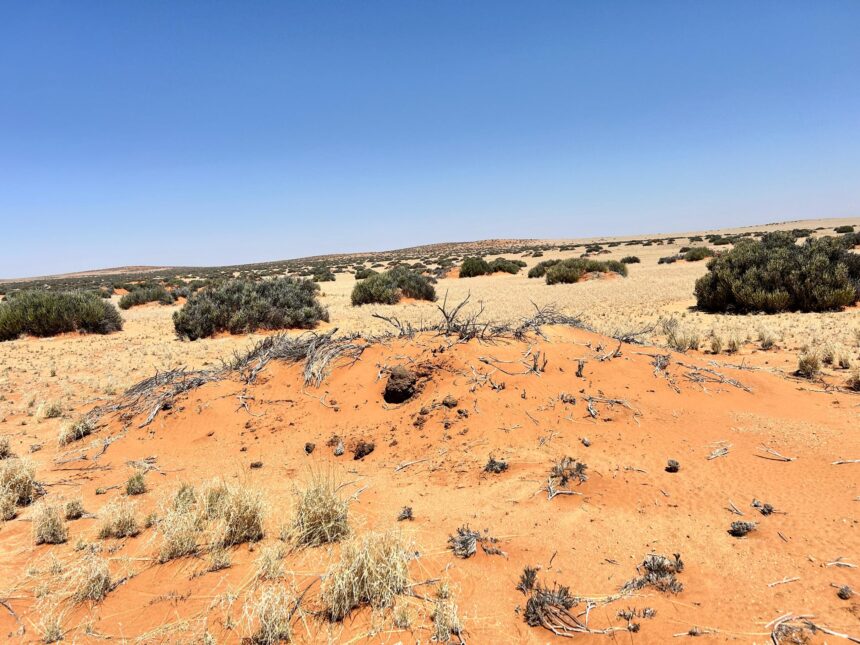LÜDERITZ –Head of Environmental, Social and Governance (ESG) at the Namibia Green Hydrogen Programme Eline van der Linden said the initiative does not rely on government funds.
“People have been asking ‘where are these people getting money’, or ‘are they taking all these risks in this new sector with government money?’ No, we are not using government money,” she clarified during a presentation to 21 journalists who went on an educational tour of this emerging sector over the weekend.
Instead, she highlighted that the funding for the initiative is sourced from various development partners, particularly from European nations.
“We are, at the moment, using funds that came from various development partners. Funding is coming from countries like the Netherlands, Germany and the EU, among others,” she said.
This financial backing is crucial as Namibia aims to establish itself as a leader in the green hydrogen sector, leveraging its abundant renewable resources.
The green hydrogen project, spearheaded by Hyphen Hydrogen Energy, represents a significant investment estimated at US$10 billion, equivalent to Namibia’s gross domestic product (GDP). The project aims to produce two million tonnes of green ammonia annually by the end of the decade.
The project is expected to create up to 15 000 new jobs during the construction phase, and
3 000 permanent jobs during its operation, with the target for 90% of these jobs to be filled by Namibians, and 20% by the youth.
The project further targets to have 30% local procurement of goods, services and materials during the construction and operational phases.
Thus far, donor funding has been utilised to mitigate risks in the sector, paving the way for future bankable projects. This initiative is supported by a €40 million investment from the Dutch government, which is managed by the SDG Namibia One Fund, a joint venture between the Environmental Investment Fund of Namibia and Climate Fund Managers.
Green hydrogen is produced by splitting water into hydrogen and oxygen elements, using electricity generated from renewable sources such as solar and wind power. This process, known as electrolysis, results in hydrogen gas, which can be used in various applications without producing carbon emissions.
There are currently eight green hydrogen projects in Namibia.
Journalists were taken into Tsau //Khaeb National Park (TKNP) to experience the park’s stunning beauty, with a primary focus on observing the footprints of the Hyphen project. This initiative showcases Namibia’s commitment to sustainable development, while highlighting the park’s unique ecosystems and landscapes.
Tsau //Khaeb National Park, formerly known as the Sperrgebiet National Park, spans approximately 22 000 square kilometres, and is renowned for its rich biodiversity, including diverse flora and fauna. The park is home to various species, from the iconic oryx and springbok to numerous bird types, making it a haven for nature enthusiasts.
With a belief that plans for new developments like hydrogen production will threaten this pristine environment, environmentalists argue that such initiatives could lead to irreversible damage to the unique flora and fauna which thrive there.
A few months ago, the Namibia Chamber of Environment (NCE) argued that the TKNP is a globally-significant biodiversity hotspot, and one of the world’s largest near-pristine wildernesses.
“The extensive industrial development planned for one of the world’s few arid biodiversity hotspots could only produce ‘red’ hydrogen, as it would threaten the persistence of many endemic plant and animal species,” reads results of the study released by the chamber.
To address this concern, the programme will pursue a Strategic Environmental and Social Assessment (SESA) for each of the three green hydrogen valleys in the south, central and northern parts of the country.
For the projects in the national parks, the International Finance Corporation’s Performance Standards for Environmental and Social Sustainability will be an important guideline.
The principles for biodiversity protection include avoiding impacts, minimising habitat fragmentation, restoring habitats and implementing compensation in protected areas where mitigation is not possible.
Responding to questions on why Namibia was chosen, Hyphen CEO Marco Raffinetti said the country has the necessary resources. Hyphen is thus ready to work as per international standards to protect the park.
The initial and early layout of the Hyphen green hydrogen project in the park covers 150 km². This includes the solar farm, the wind turbines, the hydrogen production site, the pipelines for desalinated water, hydrogen and ammonia, access roads, power transmission lines and port complex infrastructure.
The size of the two land parcels allocated to Hyphen under the Feasibility Implementation Agreement (FIA) to perform the feasibility study is approximately 4 000 km².
Busy Park
For over a century, diamond mining has been the primary economic activity in the Tsau //Khaeb National Park.
The document shared by the programme indicated that currently, Namdeb is engaged in diamond extraction within the coastal zone, while exploration for other minerals, including critical raw materials and rare earth elements, is underway.
Several renewable energy initiatives, aside from green hydrogen, are also assessing feasibility, including a 300MW wind energy project for NamPower and the Diaz Wind Power Station, which is already under construction.
“If the Kudu Gas project receives a final investment decision, a gas pipeline will be laid from Elisabeth Bay in the park to a planned industrial complex in Lüderitz. Additionally, tourism concessions have been granted within the park, with more under consideration,” reads the document.


